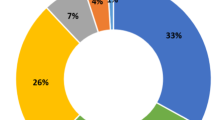Abstract
Several recent research has centered on maximizing Internet of Things (IoT) devices’ lifetime by deploying data reduction techniques on IoT nodes to reduce data transmission. Data compression methods can be seen as a direct way of achieving energy efficiency. The trade-off between compression ratio and data distortion is usually considered when using a lossy compressor. This paper proposes a light SZ compressor with a maximal compression ratio without considering this trade-off. The proposed approach was tested on ESP Wroom 32 and WiFi LoRa 32 microcontrollers. Given the importance of data quality arriving at the gateway for analysis, the proposed lossy compressor with a high compression ratio can discard important data features and patterns. This paper solves this problem by proposing a method for data enhancement based on the U-Net architecture. Therefore, the contribution of this paper is twofold: (1) Efficient data reduction approach for energy optimization at the level of IoT nodes. (2) 1D U-Net-based data recovery approach at the level of the edge.









Similar content being viewed by others
References
Antczak K (2018) Deep recurrent neural networks for ecg signal denoising. arXiv:1807.11551
Antczak K (2020) A generative adversarial approach to ecg synthesis and denoising. arXiv:200902700
Azar J, Makhoul A, Barhamgi M, Couturier R (2019) An energy efficient iot data compression approach for edge machine learning. Futur Gener Comput Syst 96:168–175. https://doi.org/10.1016/j.future.2019.02.005
Bai S, Kolter JZ, Koltun V (2018) An empirical evaluation of generic convolutional and recurrent networks for sequence modeling. arXiv:180301271
Blalock D, Madden S, Guttag J (2018) Sprintz: Time series compression for the internet of things. Proc ACM Interact Mob Wearable Ubiquitous Technol 2(3):93:1–93:23. https://doi.org/10.1145/3264903
Blalock D, Madden S, Guttag J (2018) Sprintz: Time series compression for the internet of things. Proc. ACM Interact. Mob. Wearable Ubiquitous Technol 2(3):1–23
Chiarot G, Silvestri C (2021) Time series compression: a survey. arXiv:210108784
Couturier R, Perrot G, Salomon M (2018) Image denoising using a deep encoder-decoder network with skip connections. In: Cheng, L, Leung, ACS, Ozawa, S (eds) Neural information processing, Springer International Publishing, Cham, pp 554–565
Di S, Cappello F (2016) Fast error-bounded lossy hpc data compression with sz. In: 2016 IEEE International parallel and distributed processing symposium (IPDPS). https://doi.org/10.1109/IPDPS.2016.11, vol 00, pp 730–739
El Bouny L, Khalil M, Adib A (2021) Convolutional denoising auto-encoder based awgn removal from ecg signal. In: 2021 International Conference on INnovations in Intelligent SysTems and Applications (INISTA), pp 1–6. https://doi.org/10.1109/INISTA52262.2021.9548524
et al ALG (2000) Physiobank, physiotoolkit, and physionet: Components of a new research resource for complex physiologic signals. Circulation
LoRa air time calculator (2021) https://www.loratools.nl/#/airtime, accessed: 2021-04-09
Perslev M, Jensen MH, Darkner S, Jennum PJ, Igel C (2019) U-time: A fully convolutional network for time series segmentation applied to sleep staging. arXiv:191011162
Razzaque MA, Bleakley C, Dobson S (2013) Compression in wireless sensor networks: a survey and comparative evaluation. ACM Trans Sen Netw 10(1):5:1–5:44. https://doi.org/10.1145/2528948
Ronneberger O, Fischer P, Brox T (2015) U-net: Convolutional networks for biomedical image segmentation. arXiv:1505.04597
Shen H, George D, Huerta EA, Zhao Z (2017) Denoising gravitational waves using deep learning with recurrent denoising autoencoders. arXiv:1711.09919
Shimmer sensing (2021) http://www.shimmersensing.com/products/shimmer3-wireless-gsr-sensor, accessed: 2021-04-09
Srisooksai T, Keamarungsi K, Lamsrichan P, Araki K (2012) Practical data compression in wireless sensor networks: A survey. J Netw Comput Appl 35(1):37–59. https://doi.org/10.1016/j.jnca.2011.03.001, collaborative Computing and Applications
TS L (June 2005) Biometric human identification based on electrocardiogram. Master’s thesis, Faculty of Computing Technologies and Informatics Electrotechnical University ”LETI”. Saint-Petersburg, Russian Federation
Weytjens H, De Weerdt J (2020) Process outcome prediction: Cnn vs. lstm (with attention). In: International Conference on Business Process Management, Springer, pp 321–333
Xiong P, Wang H, Liu M, Zhou S, Hou Z, Liu X (2016) Ecg signal enhancement based on improved denoising auto-encoder. Eng Appl Artif Intell 52:194–202. https://doi.org/10.1016/j.engappai.2016.02.015
Zhang H, Zhao M, Wei C, Mantini D, Li Z, Liu Q (2021) Eegdenoisenet: a benchmark dataset for deep learning solutions of eeg denoising. J Neural Eng 18(5):056057
Zhang X, Zhao J, LeCun Y (2015) Character-level convolutional networks for text classification. Adv Neural Inf Process Syst 28:649–657
Acknowledgment
This work has been supported by the EIPHI Graduate School (contract “ANR-17-EURE-0002”). Computations have been performed on the supercomputer facilities of the “Mésocentre de calcul de Franche-Comté”
Author information
Authors and Affiliations
Corresponding author
Additional information
Publisher’s Note
Springer Nature remains neutral with regard to jurisdictional claims in published maps and institutional affiliations.
Rights and permissions
About this article
Cite this article
Azar, J., Tayeh, G.B., Makhoul, A. et al. Efficient Lossy Compression for IoT Using SZ and Reconstruction with 1D U-Net. Mobile Netw Appl 27, 984–996 (2022). https://doi.org/10.1007/s11036-022-01918-6
Accepted:
Published:
Issue Date:
DOI: https://doi.org/10.1007/s11036-022-01918-6





